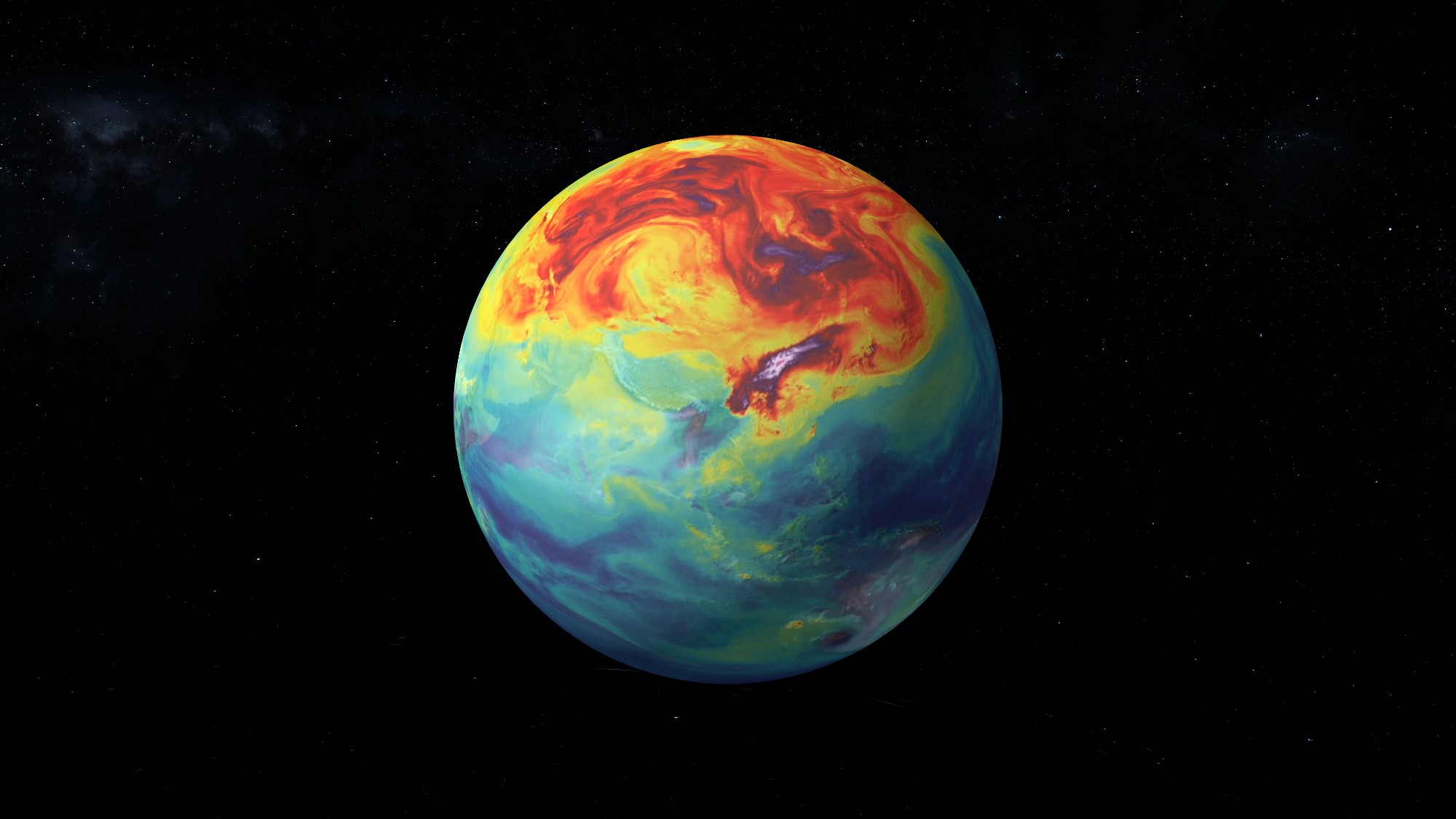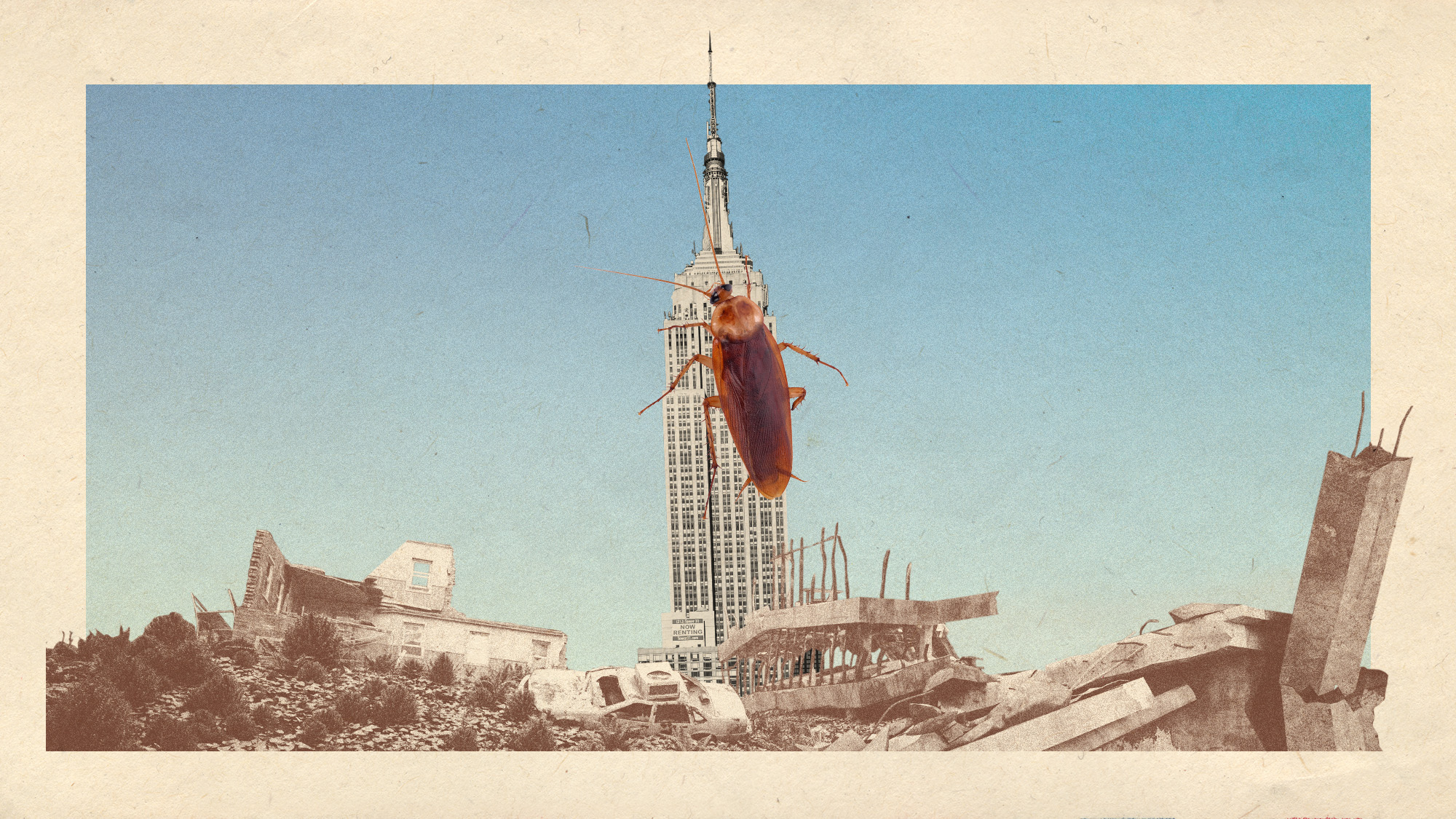Why are scientists searching for the world's oldest ice?
A climate time capsule is frozen kilometers under Antarctica


Scientists are on the hunt for Earth's oldest ice, but what exactly are they hoping to learn? Here's everything you need to know:
What are scientists searching for?
Armed with drills, scientists have trekked to the Earth's southernmost continent — Antarctica — to hopefully pull up a slice of geologic history. Specifically, scientists are trying to recover the oldest pieces of ice on Earth in hopes of learning how the Earth's climate has changed, writes Scientific American.
The goal is to retrieve an ice core, which has been preserved for years under layers of snow, by drilling multiple kilometers down. The cores act almost like the rings inside a tree, in that they can paint a picture of Earth's atmosphere over time. To make matters even more interesting, there is a "friendly race" between Europe, Australia, and the U.S. — where the project is called the Center for Oldest Ice Exploration, or COLDEX — to see who can first find and extract the ice.
The Week
Escape your echo chamber. Get the facts behind the news, plus analysis from multiple perspectives.

Sign up for The Week's Free Newsletters
From our morning news briefing to a weekly Good News Newsletter, get the best of The Week delivered directly to your inbox.
From our morning news briefing to a weekly Good News Newsletter, get the best of The Week delivered directly to your inbox.
While the oldest known core of ice dates back approximately 2.7 million years, per Science, the oldest continuous ice core dates back just 800,000. And because the 2.7 million-year-old core came from the edge of the continent, it's not nearly as dated in layers as the continuous core. In launching COLDEX, scientists are hoping to fill in the gaps between the two pieces.
"It's sort of like a box of puzzle pieces. With a traditional [continuous] ice core, all the jigsaw pieces are exactly in the right spot," said Christo Buizert, leader of the COLDEX ice analysis team. But cores collected from the edge of the continent are "like somebody just took the puzzle and shuffled all the pieces together."
Evidence suggests there is even older ice to be found, as well, some of which could date back potentially 5 million years. "The ice that is deposited at the surface of Antarctica is being buried and gradually flowing out toward the [continent's] edges — and then eventually is lost, melting into the ocean or as icebergs calving into the ocean. Because of that process, the oldest ice is always rare," Ed Brook, director of COLDEX, told Scientific American.
Why are scientists interested in the ice?
The ice contains air bubbles indicative of the atmospheric conditions when it first froze over, affording researchers valuable comparative material to measure against today's atmosphere. As Scientific American notes: "This is about as close to time travel as scientists can get."
A free daily email with the biggest news stories of the day – and the best features from TheWeek.com
"How much does sea level go up? How much does the climate continue to warm?" Brook has asked, per a report in Climatewire. "By getting a much more accurate picture of the greenhouse gas concentration in the atmosphere, we should be able to say something more specific about how sensitive the earth's system is to greenhouse gases."
Specifically, COLDEX is hoping to extract a continuous 1.5 million-year-old core, a goal both the European and Australian teams have, as well. Samples that old would give scientists a look at the climate "before time."
"There's a reason why we're interested in these earlier [ice] intervals," said Sarah Shackleton, a COLDEX team member and Princeton University postdoctoral researcher in paleoclimatology. "And it's because they were warmer."
What can the old ice tell us about the climate?
Scientists can analyze the gas concentrations within the ice's air bubbles to paint a picture of the atmospheric makeup years ago, as well as identify the planet's "climate heartbeat," or the relationship between carbon dioxide and Earth's temperatures. For instance, atmospheric carbon dioxide in the 2.7 million-year-old sample "did not exceed 300 parts per million," which is "well below today's levels," Science wrote in 2017.
Further, though the planet has long suffered changes in climate, those fluctuations used to be much smaller than they are today. To that end, the ice samples afford researchers a chance to compare today's rapid climate changes at the hands of humans to those that happened before humans.
"A perfect analogy would be if somebody had burned all the fossil fuels up 2 million years ago," Brook said, per Climatewire. "So the changes in the past are not as rapid as we're experiencing now. But there's still information that's still very important to understand how climate works."
Devika Rao has worked as a staff writer at The Week since 2022, covering science, the environment, climate and business. She previously worked as a policy associate for a nonprofit organization advocating for environmental action from a business perspective.
-
 The Week’s big New Year’s Day quiz 2026
The Week’s big New Year’s Day quiz 2026Quiz of the Year How much do you remember about 2025’s headlines? Put yourself to the test with our bumper quiz of the year
-
 Is tanking ruining sports?
Is tanking ruining sports?Today's Big Question The NBA and the NFL want teams to compete to win. What happens if they decide not to?
-
 ‘Netflix needs to not just swallow HBO but also emulate it’
‘Netflix needs to not just swallow HBO but also emulate it’instant opinion Opinion, comment and editorials of the day
-
 How climate change is affecting Christmas
How climate change is affecting ChristmasThe Explainer There may be a slim chance of future white Christmases
-
 Why scientists are attempting nuclear fusion
Why scientists are attempting nuclear fusionThe Explainer Harnessing the reaction that powers the stars could offer a potentially unlimited source of carbon-free energy, and the race is hotting up
-
 Canyons under the Antarctic have deep impacts
Canyons under the Antarctic have deep impactsUnder the radar Submarine canyons could be affecting the climate more than previously thought
-
 NASA is moving away from tracking climate change
NASA is moving away from tracking climate changeThe Explainer Climate missions could be going dark
-
 What would happen to Earth if humans went extinct?
What would happen to Earth if humans went extinct?The Explainer Human extinction could potentially give rise to new species and climates
-
 Bacteria can turn plastic waste into a painkiller
Bacteria can turn plastic waste into a painkillerUnder the radar The process could be a solution to plastic pollution
-
 A zombie volcano is coming back to life, but there is no need to worry just yet
A zombie volcano is coming back to life, but there is no need to worry just yetUnder the radar Uturuncu's seismic activity is the result of a hydrothermal system
-
 'Bioelectric bacteria on steroids' could aid in pollutant cleanup and energy renewal
'Bioelectric bacteria on steroids' could aid in pollutant cleanup and energy renewalUnder the radar The new species is sparking hope for environmental efforts
